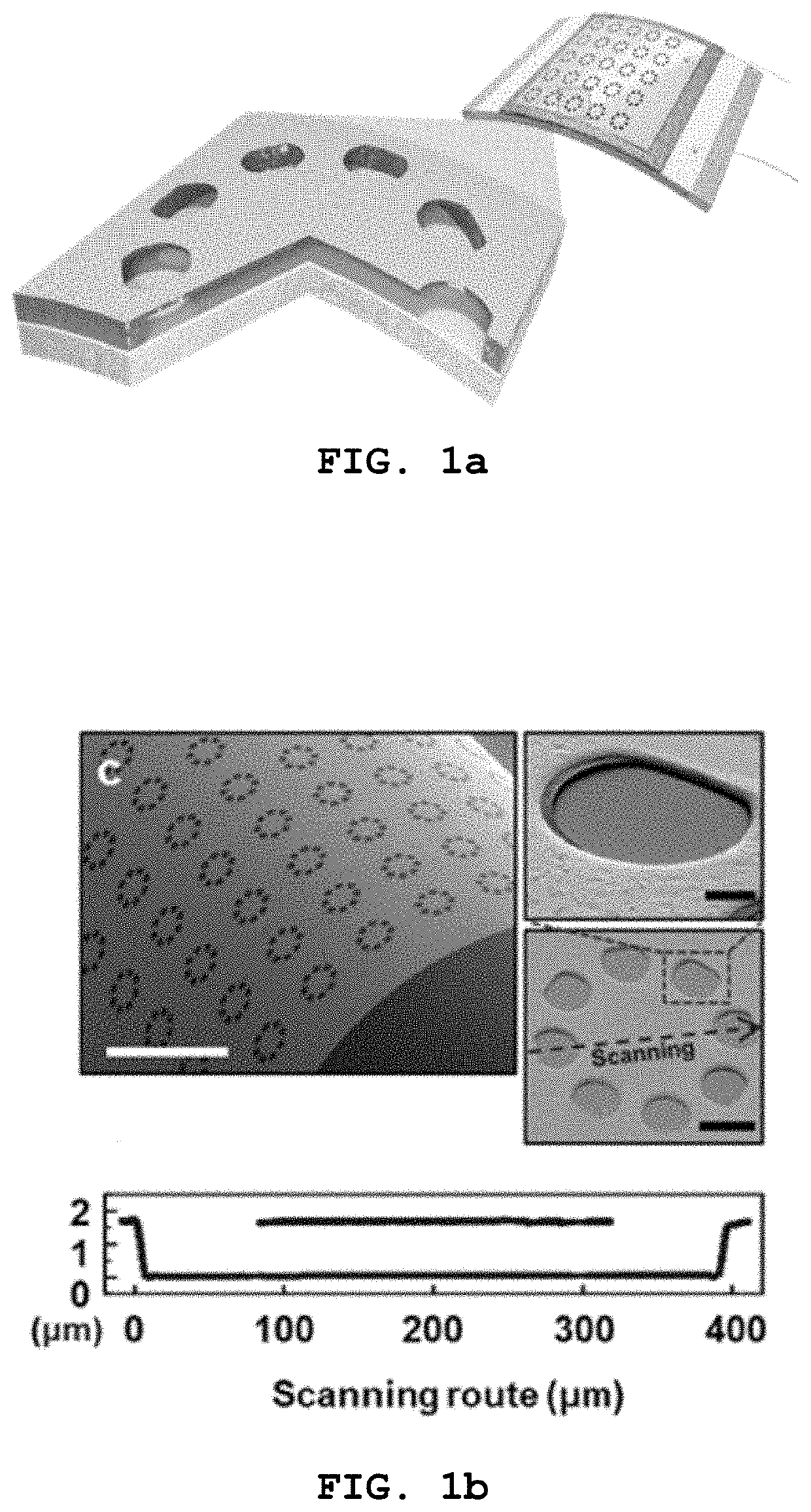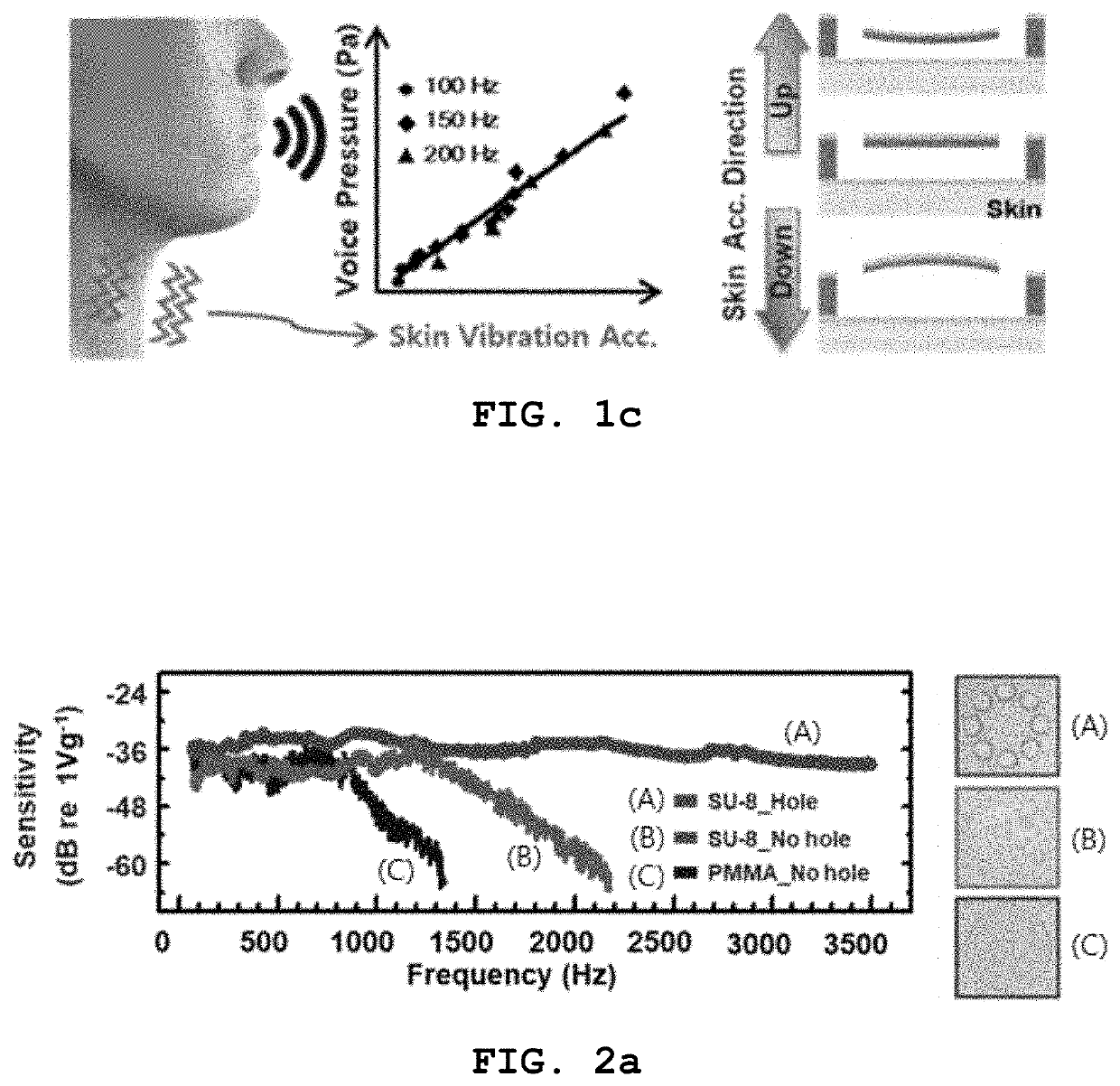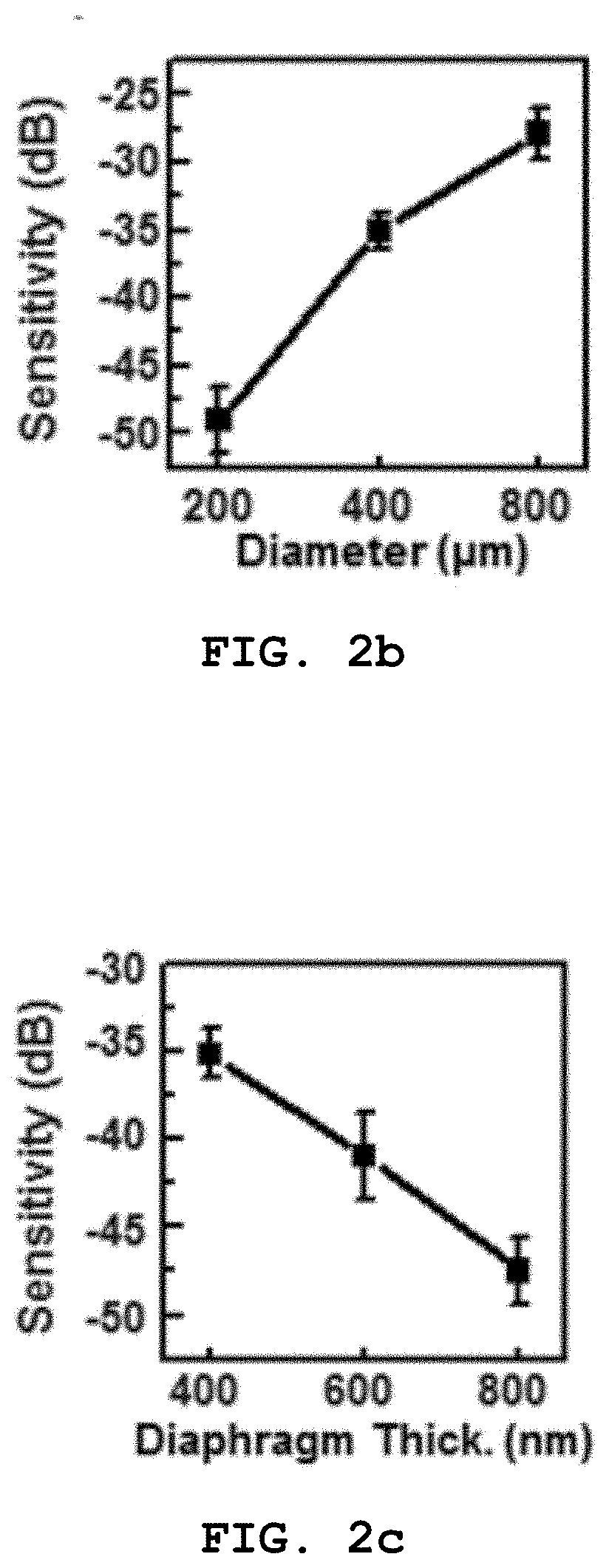Attachable vibration sensor and method for manufacturing same
a vibration sensor and vibration technology, applied in the field of attachmentable vibration sensors, can solve the problems of poor performance, user's voice can be distorted or difficult to recognize, and the current voice recognition technology is not practical, and achieve the effects of excellent skin conformity, uniform and high sensitivity, and sensitive detection
Pending Publication Date: 2021-07-08
CENT FOR ADVANCED SOFT ELECTRONICS +1
View PDF3 Cites 3 Cited by
- Summary
- Abstract
- Description
- Claims
- Application Information
AI Technical Summary
Benefits of technology
[0032]According to the present disclosure, it is possible to manufacture a skin-attachable vocal cord microphone that is attached to a user's neck to detect vibration acceleration in user's neck skin, thus exhibiting a uniform and high sensitivity to a user's voice over the frequency range of the human voice.
[0033]In addition, it is possible to sensitively detect a user's voice through neck skin vibrations rather than through air, thus being free from the influence
Problems solved by technology
However, current voice recognition technology is not practical because user's voice can be distorted or difficult to recognize depending on the external environmental factors such as noise or the need to cover a user's mouth.
However, these technologies use plastic chokers when worn on the neck, so that when the chockers are tightened, the skin is compressed, resulting in poor performance, a poor fit, and a poor aesthetic appearance.
Conventional microphones recognize noise and wind in addition to human voices in noisy or windy environments, which makes it difficult to distinguish only human voices separately.
In addition, such microphones distort and receive speaker's voice information when a person speaks with his/her mouth covered in cases where a quiet atmosphere or wearing a mask is required.
This is affected by changes in other air pressures such as noise and wind, and the air pressure changes caused by speaking is blocked when the mouth is covered, so that the speaker's voice cannot be recognized well.
Most conventional vocal cord microphones (laryngophone, throat microphone, etc.) developed to solve this problem convert skin vibrations into voltage signals by using piezoelectric materials, but most commercially available devices are sensors that do not have a uniform sensitivity to vibration intensity or frequency.
In addition, because these sensors are worn
Method used
the structure of the environmentally friendly knitted fabric provided by the present invention; figure 2 Flow chart of the yarn wrapping machine for environmentally friendly knitted fabrics and storage devices; image 3 Is the parameter map of the yarn covering machine
View moreImage
Smart Image Click on the blue labels to locate them in the text.
Smart ImageViewing Examples
Examples
Experimental program
Comparison scheme
Effect test
 Login to View More
Login to View More PUM
 Login to View More
Login to View More Abstract
Proposed is a vibration sensor including: a substrate; a first electrode positioned on the substrate; a support positioned on the first electrode and including a cylindrical hollow hole; and a diaphragm including a thin film positioned on the support and a second electrode positioned on the thin film. According to the present disclosure, it is possible to manufacture a skin-attachable vibration sensor that is attached to a user's neck to detect vibration acceleration in user's neck skin, thus exhibiting a uniform and high sensitivity to a user's voice over the frequency range of the human voice. In addition, the sensor sensitively detects a user's voice through neck skin vibrations rather than through air, thus being free from the influence of external noise or wind, and can recognize the user's voice even in a situation where a user's mouth is covered.
Description
TECHNICAL FIELD[0001]The present disclosure relates to an attachable vibration sensor and a method for manufacturing the same. More particularly, the present disclosure relates to a skin-attachable ultrathin film vibration sensor having a high and uniform sensitivity over the voice frequency range (80 to 3400 Hz) by the use of a crosslinked polymer material and a patterned diaphragm structure, and to a method for manufacturing the same.BACKGROUND ART[0002]Recently, many companies such as Samsung, Apple, Google, and Amazon have been focusing on businesses related to voice recognition. The human voice is the most valuable biosignal for communication, and voice recognition is expected to occupy more than 15% of the market by 2022 in the human-machine interface (HMI) and Internet of Things (IoT) fields. However, current voice recognition technology is not practical because user's voice can be distorted or difficult to recognize depending on the external environmental factors such as noi...
Claims
the structure of the environmentally friendly knitted fabric provided by the present invention; figure 2 Flow chart of the yarn wrapping machine for environmentally friendly knitted fabrics and storage devices; image 3 Is the parameter map of the yarn covering machine
Login to View More Application Information
Patent Timeline
 Login to View More
Login to View More IPC IPC(8): H04R1/08H04R31/00H04R1/40H04R3/00H04R7/04H04R7/16G10L25/78H04R1/14
CPCH04R1/083H04R31/003H04R31/006H04R1/406H04R2307/025H04R7/04H04R7/16G10L25/78H04R1/14H04R3/005G01H11/06H04R1/46G10L15/24H04R1/08
Inventor CHO, KILWONLEE, SIYOUNGCHUNG, YOONYOUNG
Owner CENT FOR ADVANCED SOFT ELECTRONICS
Features
- R&D
- Intellectual Property
- Life Sciences
- Materials
- Tech Scout
Why Patsnap Eureka
- Unparalleled Data Quality
- Higher Quality Content
- 60% Fewer Hallucinations
Social media
Patsnap Eureka Blog
Learn More Browse by: Latest US Patents, China's latest patents, Technical Efficacy Thesaurus, Application Domain, Technology Topic, Popular Technical Reports.
© 2025 PatSnap. All rights reserved.Legal|Privacy policy|Modern Slavery Act Transparency Statement|Sitemap|About US| Contact US: help@patsnap.com



